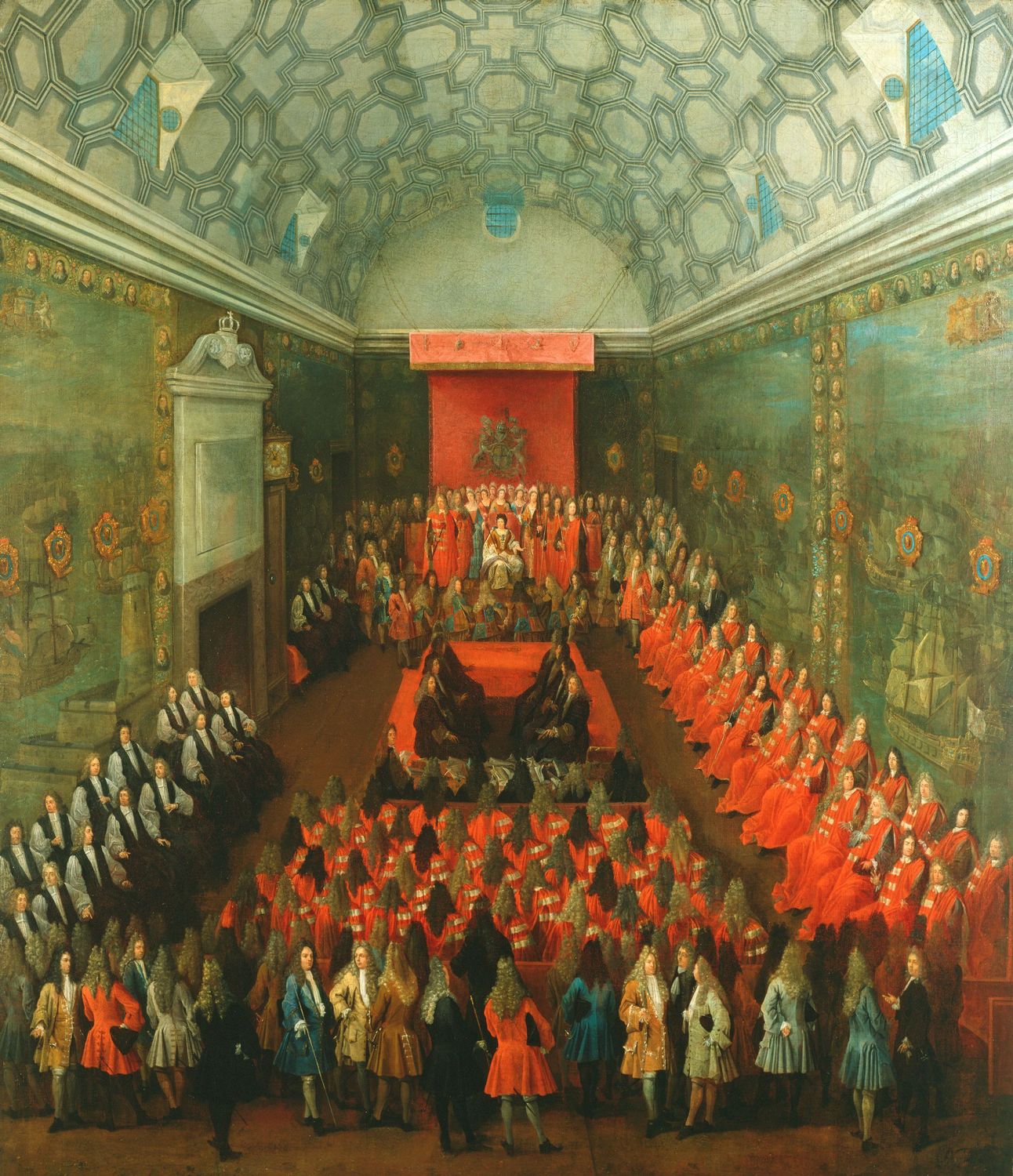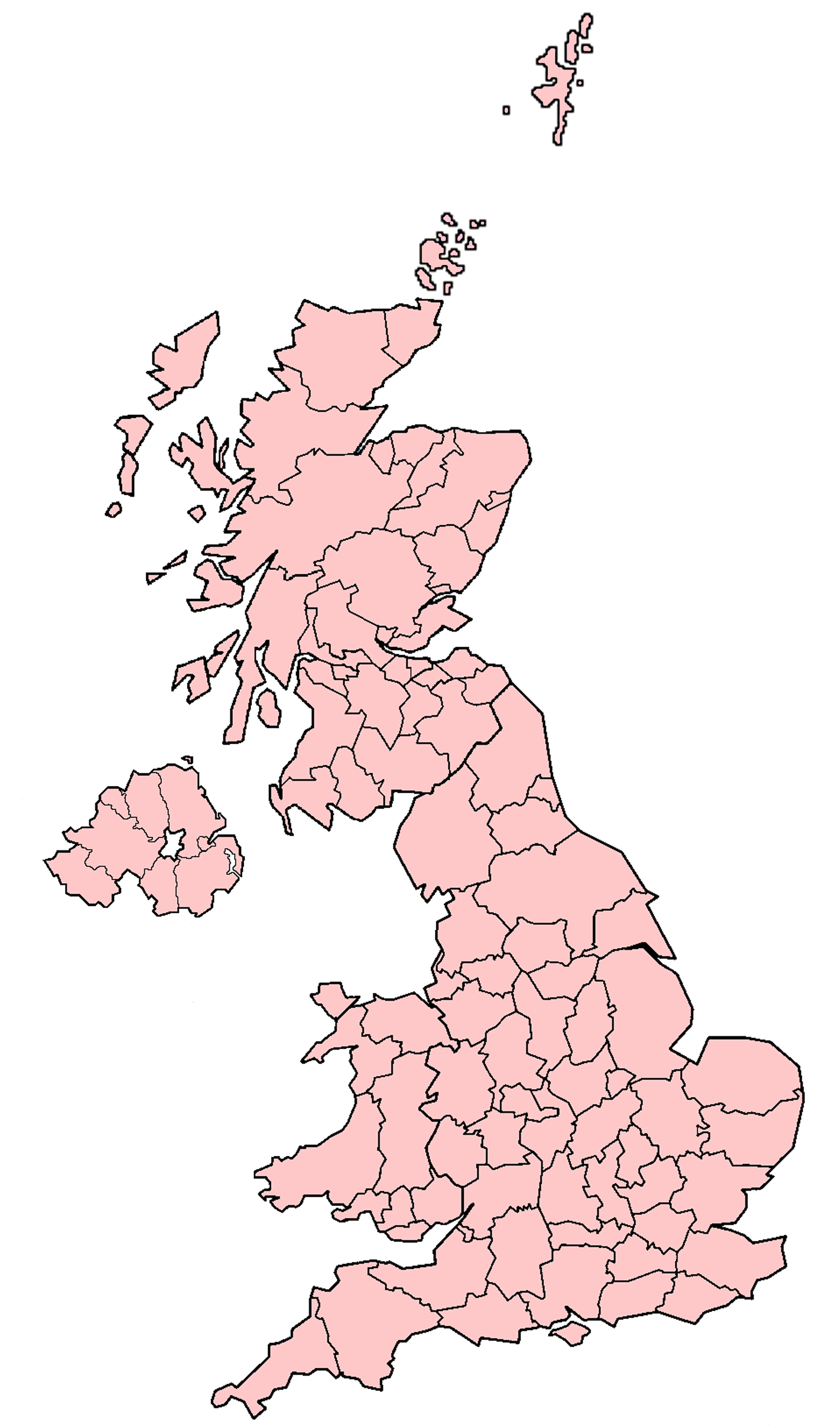|
Earl Peel
Earl Peel is a title in the Peerage of the United Kingdom. The Peel family descends from Robert Peel, eldest son of a wealthy cotton merchant. The family lands, known as Drayton Manor, in the County of Stafford would become more commonly known in modern-day as an amusement park. The family seat is Elmire House, near Ripon, North Yorkshire. History The earldom was created in 1929 for the Conservative Party politician William Peel, 2nd Viscount Peel, who was Chancellor of the Duchy of Lancaster 1921–1922, Secretary of State for India 1921–1922 and 1928–1929, and First Commissioner of Works 1924–1928. At the same time, he was created Viscount Clanfield, of Clanfield in the County of Southampton, also in the Peerage of the United Kingdom. He was the son of Arthur Peel, 1st Viscount Peel, who served as Speaker of the House of Commons between 1884 and 1895, and who was created Viscount Peel, of Sandy in the County of Bedford, in the Peerage of the United Kingdom in 189 ... [...More Info...] [...Related Items...] OR: [Wikipedia] [Google] [Baidu] |
Coronet Of A British Earl
In British heraldry, a coronet is a type of crown that is a mark of rank of non-reigning members of the royal family and peers. In other languages, this distinction is not made, and usually the same word for ''crown'' is used irrespective of rank (, , , , , etc.) In this use, the English ''coronet'' is a purely technical term for all heraldic images of crowns not used by a sovereign. A Coronet is another type of crown, but is reserved for the nobility - Dukes, Marquesses, Earls, Viscounts and Barons. The specific design and attributes of the crown or coronet signifies the hierarchy and ranking of its owner. Certain physical coronets are worn by the British peerage on rare ceremonial occasions, such as the coronation of the monarch. These are also sometimes depicted in heraldry, and called coronets of rank in heraldic usage. Their shape varies depending on the wearer's rank in the peerage, according to models laid down in the 16th century. Similar depictions of crowns of rank () ... [...More Info...] [...Related Items...] OR: [Wikipedia] [Google] [Baidu] |
County Of Southampton
Hampshire (, ; abbreviated to Hants.) is a ceremonial county in South East England. It is bordered by Berkshire to the north, Surrey and West Sussex to the east, the Isle of Wight across the Solent to the south, Dorset to the west, and Wiltshire to the north-west. Southampton is the largest settlement, while Winchester is the county town. Other significant settlements within the county include Portsmouth, Basingstoke, Andover, Gosport, Fareham and Aldershot. The county has an area of and a population of 1,844,245, making it the 5th-most populous in England. The South Hampshire built-up area in the south-east of the county has a population of 855,569 and contains the cities of Southampton (269,781) and Portsmouth (208,100). In the north-east, the Farnborough/Aldershot conurbation extends into Berkshire and Surrey and has a population of 252,937. The next-largest settlements are Basingstoke (113,776), Andover (50,887), and Winchester (45,184). The centre and south-wes ... [...More Info...] [...Related Items...] OR: [Wikipedia] [Google] [Baidu] |
Blackburn
Blackburn () is an industrial town and the administrative centre of the Blackburn with Darwen borough in Lancashire, England. The town is north of the West Pennine Moors on the southern edge of the River Ribble, Ribble Valley, east of Preston, Lancashire, Preston and north-northwest of Manchester. Blackburn is at the centre of the wider unitary authority area along with the town of Darwen. It is the second largest town (after Blackpool) in Lancashire. At the United Kingdom Census 2011, 2011 census, Blackburn had a population of List of urban areas in England by population, 117,963, whilst the wider borough of Blackburn with Darwen had a population of List of English districts by population, 150,030. Blackburn had a population of 117,963 in 2011, with 30.8% being people of ethnic backgrounds other than white British. A former mill town, Blackburn has been the site of textile production since the mid-13th century, when wool was woven in people's houses in the domestic sy ... [...More Info...] [...Related Items...] OR: [Wikipedia] [Google] [Baidu] |
Calico
Calico (; in British usage since 1505) is a heavy plain-woven textile made from unbleached, and often not fully processed, cotton. It may also contain unseparated husk parts. The fabric is far coarser than muslin, but less coarse and thick than canvas or denim. However, it is still very cheap owing to its unfinished and undyed appearance. The fabric was originally from the city of Calicut in southwestern India. It was made by the traditional weavers called cāliyans. The raw fabric was dyed and printed in bright hues, and calico prints became popular in Europe. History Origins Calico originated in Calicut, from which the name of the textile came, in South India, now Kerala, during the 11th century, where the cloth was known as "chaliyan". It was mentioned in Indian literature by the 12th century when the polymath and writer Hemachandra described calico fabric prints with a lotus design.''Encyclopædia Britannica'' (2008)"calico" Calico was woven using Gujarati cotton from Su ... [...More Info...] [...Related Items...] OR: [Wikipedia] [Google] [Baidu] |
Lord Chamberlain Of The Household
Lord is an appellation for a person or deity who has authority, control, or power over others, acting as a master, chief, or ruler. The appellation can also denote certain persons who hold a title of the peerage in the United Kingdom, or are entitled to courtesy titles. The collective "Lords" can refer to a group or body of peers. Etymology According to the ''Oxford Dictionary of English'', the etymology of the word can be traced back to the Old English word ''hlāford'' which originated from ''hlāfweard'' meaning "loaf-ward" or "bread-keeper", reflecting the Germanic tribal custom of a chieftain providing food for his followers. The appellation "lord" is primarily applied to men, while for women the appellation "lady" is used. This is no longer universal: the Lord of Mann, a title previously held by the Queen of the United Kingdom, and female Lords Mayor are examples of women who are styled as "Lord". Historical usage Feudalism Under the feudal system, "lord" had a w ... [...More Info...] [...Related Items...] OR: [Wikipedia] [Google] [Baidu] |
Lord Warden Of The Stannaries
The Lord Warden of the Stannaries (from for Tin, Tin, Sn) used to exercise judicial and military functions in Cornwall, England, UK, and is still the official who, upon the commission of the British monarchy, monarch or Duke of Cornwall for the time being, has the function of calling a Cornish Stannary Parliament, stannary parliament of tinners. The last such parliament sat in 1753. The first Lord Warden of the Stannaries of Cornwall and Devon was William de Wrotham, who was appointed during the reign of Richard I of England, Richard I on 20 November 1197. Until 1502 normally separate Lords Warden were appointed for Cornwall and Devon (as shown in brackets below) and these also acted as stewards for Duchy estates in those counties. In 1502, Robert, 2nd Lord Willoughby de Broke was appointed as Lord Steward for Duchy estates in Cornwall and Devon, Lord Warden of the Stannaries in both, Master Forester of Dartmoor, and the successors appointed since have been granted these office ... [...More Info...] [...Related Items...] OR: [Wikipedia] [Google] [Baidu] |
House Of Lords Act 1999
The House of Lords Act 1999 (c. 34) is an act of the Parliament of the United Kingdom that reformed the House of Lords, one of the chambers of Parliament. The Act was given royal assent on 11 November 1999. For centuries, the House of Lords had included several hundred members who inherited their seats (hereditary peers); the Act removed such a right. However, as part of a compromise, the Act allowed ninety-two hereditary peers to remain in the House. Another ten were created life peers to enable them to remain in the House. The Act decreased the membership of the House from 1,330 in October 1999 to 669 in March 2000. As another result of the Act, the majority of the Lords were thence life peers, whose numbers had been gradually increasing since the Life Peerages Act 1958. As of June 2023, there were members of the House of Lords, of whom were senior Church of England bishops, whose representation in the House is governed by the Lords Spiritual (Women) Act 2015. Backgro ... [...More Info...] [...Related Items...] OR: [Wikipedia] [Google] [Baidu] |
House Of Lords
The House of Lords is the upper house of the Parliament of the United Kingdom. Like the lower house, the House of Commons of the United Kingdom, House of Commons, it meets in the Palace of Westminster in London, England. One of the oldest extant institutions in the world, its origins lie in the early 11th century and the emergence of bicameralism in the 13th century. In contrast to the House of Commons, membership of the Lords is not generally acquired by Elections in the United Kingdom, election. Most members are Life peer, appointed for life, on either a political or non-political basis. House of Lords Act 1999, Hereditary membership was limited in 1999 to 92 List of excepted hereditary peers, excepted hereditary peers: 90 elected through By-elections to the House of Lords, internal by-elections, plus the Earl Marshal and Lord Great Chamberlain as members Ex officio member, ''ex officio''. No members directly inherit their seats any longer. The House of Lords also includes ... [...More Info...] [...Related Items...] OR: [Wikipedia] [Google] [Baidu] |
List Of Excepted Hereditary Peers
Under the reforms of the House of Lords Act 1999, the majority of hereditary peers lost the right to sit as members of the House of Lords, the upper house of the Parliament of the United Kingdom. Section 2 of the Act, however, provides an exception from this general exclusion of membership for up to 92 hereditary peers: 90 to be elected by the House, as well as the holders of two royal offices, the Earl Marshal and the Lord Great Chamberlain, who sit as Ex officio member, ''ex officio'' members. The initial cohort of excepted hereditary peers were elected in the 1999 House of Lords elections. Between 1999 and November 2002, vacancies among this group were filled by runners-up in the 1999 election. Since then, by-elections to the House of Lords have filled vacancies. Candidature for both the 1999 elections and subsequent by-elections is restricted to peers in the Peerage of England, Peerages of England, Peerage of Scotland, Scotland, Peerage of Great Britain, Great Britain and the P ... [...More Info...] [...Related Items...] OR: [Wikipedia] [Google] [Baidu] |
Lord-Lieutenant Of Lancashire
A lord-lieutenant ( ) is the British monarch's personal representative in each lieutenancy area of the United Kingdom. Historically, each lieutenant was responsible for organising the county's militia. In 1871, the lieutenant's responsibility over the local militia was removed. However, it was not until 1921 that they formally lost the right to call upon able-bodied men to fight when needed. Lord-lieutenant is now an honorary titular position usually awarded to a notable person in the county, and despite the name, may be either male or female, peer or not. Origins England and Wales Lieutenants were first appointed to a number of English counties by King Henry VIII in the 1540s, when the military functions of the sheriffs were handed over to them. Each lieutenant raised and was responsible for the efficiency of the local militia units of his county, and afterwards of the yeomanry and volunteers. He was commander of these forces, whose officers he appointed. These commissions w ... [...More Info...] [...Related Items...] OR: [Wikipedia] [Google] [Baidu] |
Arthur Peel, 2nd Earl Peel
Arthur William Ashton Peel, 2nd Earl Peel (29 May 1901 – 22 September 1969), styled Viscount Clanfield from 1929 to 1937, was a British peer. Peel was the son of William Peel, 1st Earl Peel, by the Honourable Eleanor "Ella" Williamson, daughter of James Williamson, 1st Baron Ashton. He was a great-grandson of Prime Minister Robert Peel. He became known by the courtesy title Viscount Clanfield when his father was elevated to an earldom in 1929. In 1937 he succeeded in the earldom on the death of his father. He succeeded to the family baronetcy in 1942 on the death of the 6th baronet, his second cousin once removed. In 1948 he was appointed Lord-Lieutenant of Lancashire, a post he held until 1951. Lord Peel married Kathleen McGrath, daughter of Michael McGrath, on 11 March 1946. They had two sons. He died in September 1969, aged 68, and was succeeded by his eldest son, William. References 1901 births 1969 deaths Earls in the Peerage of the United Kingdom ... [...More Info...] [...Related Items...] OR: [Wikipedia] [Google] [Baidu] |
County Of Bedford
Bedfordshire (; abbreviated ''Beds'') is a ceremonial county in the East of England. It is bordered by Northamptonshire to the north, Cambridgeshire to the north-east, Hertfordshire to the south and the south-east, and Buckinghamshire to the west. The largest settlement is Luton (225,262), and Bedford is the county town. The county has an area of and had a population of 704,736 at the 2021 census. ''plus'' ''plus'' Its other towns include Leighton Buzzard, Dunstable, Biggleswade, Houghton Regis, and Flitwick. Much of the county is rural. For local government purposes, Bedfordshire comprises three unitary authority areas: Bedford, Central Bedfordshire, and Luton. The county's highest point is on Dunstable Downs in the Chilterns. History The first recorded use of the name in 1011 was "Bedanfordscir", meaning the shire or county of Bedford, which itself means "Beda's ford" (river crossing). Bedfordshire was historically divided into nine hundreds: Barford, Biggleswad ... [...More Info...] [...Related Items...] OR: [Wikipedia] [Google] [Baidu] |





